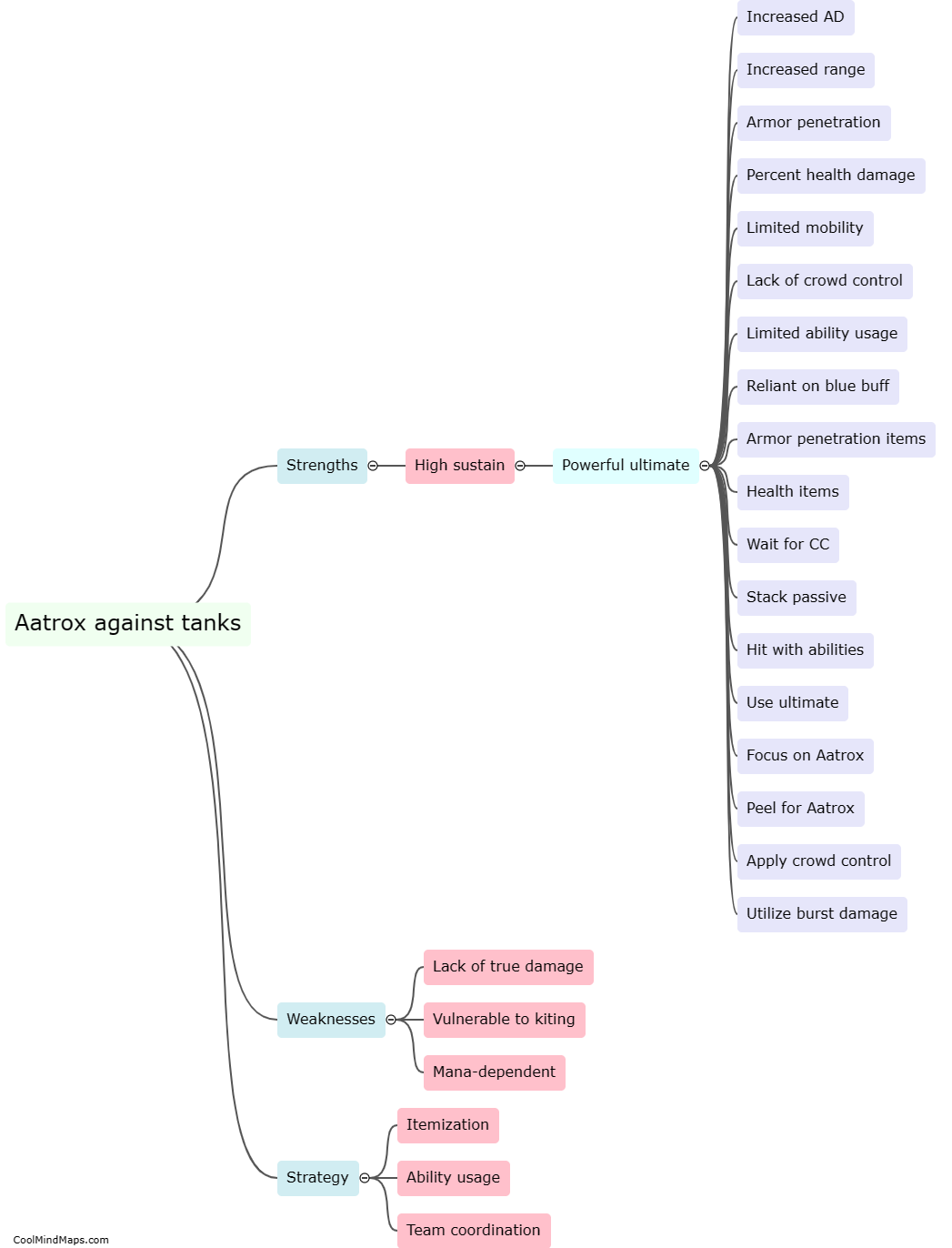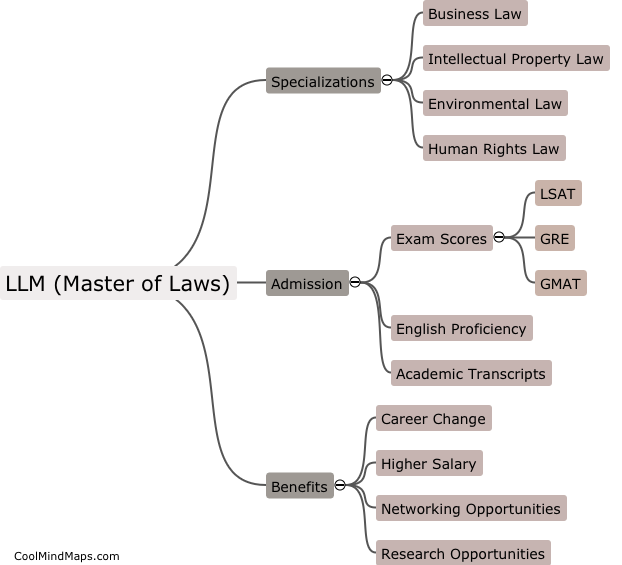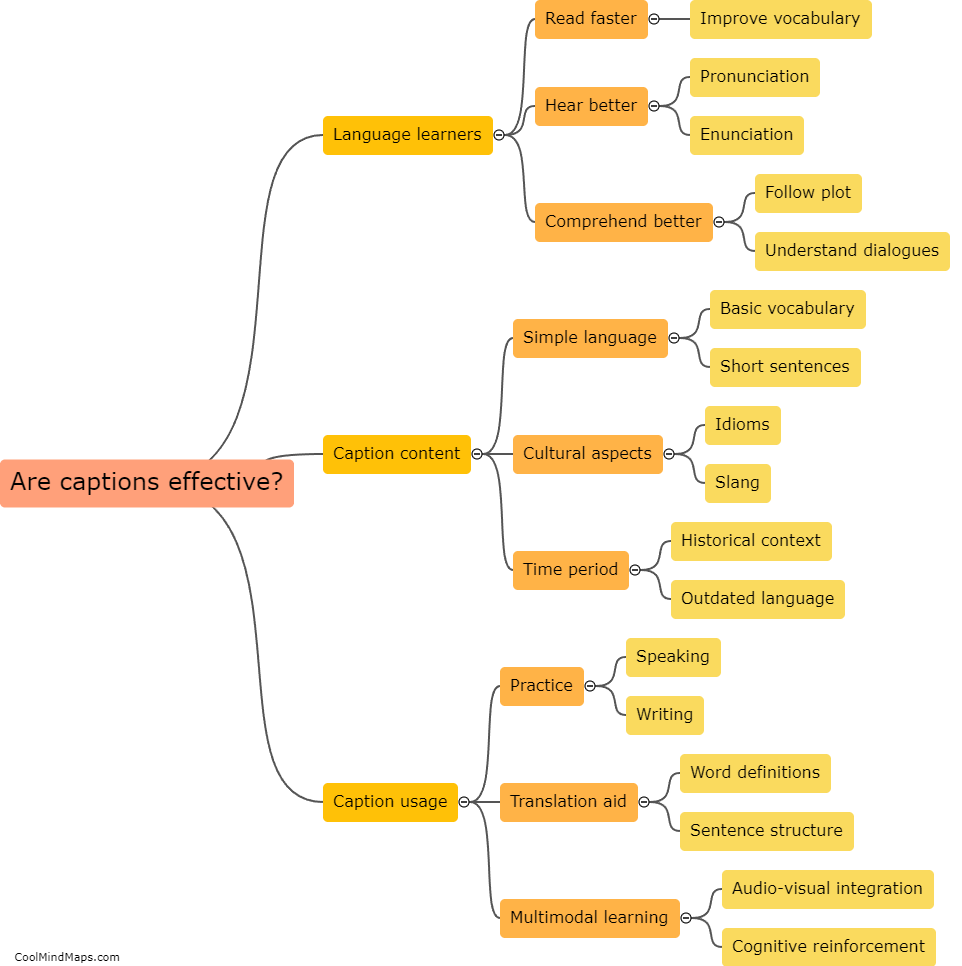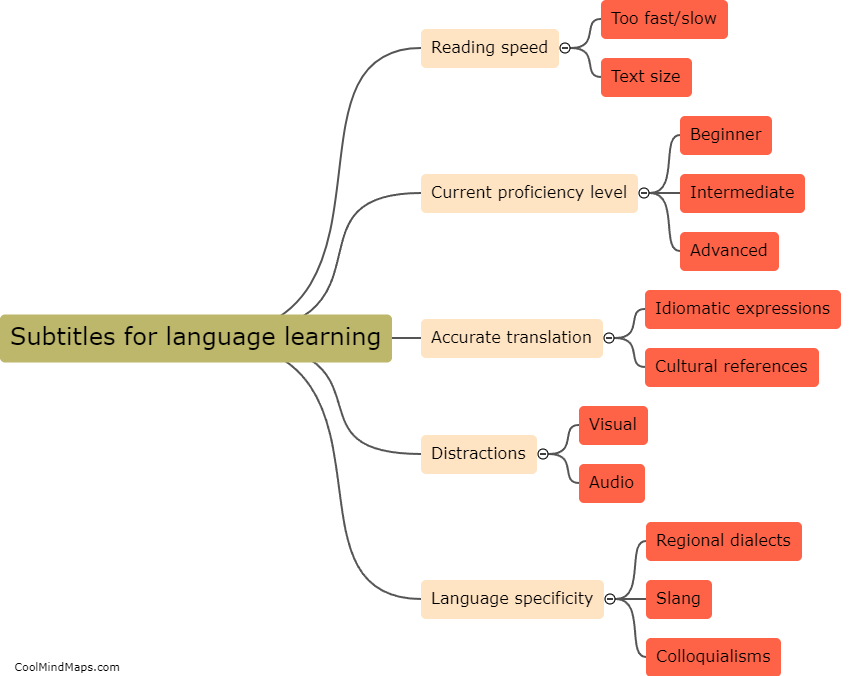Differences between subtitles and captions for language learning
Subtitles and captions are two important elements in language learning. Subtitles refer to the text that appears on screen during a video or movie presentation providing a translation of the audio in a foreign language, while captions include every sound effect and spoken word in the video, providing a transcription of the dialogue. Subtitles are mainly used as a language learning tool as they aid learners in comprehending the foreign language they are interested in since they translate only the dialogue needed. On the other hand, captions are useful for people who are deaf or hard of hearing, as they provide a complete transcription of the dialogue and sound effects. For language learners, subtitles are more beneficial since the immediate translation can assist with vocabulary acquisition, pronunciation and comprehension of context.
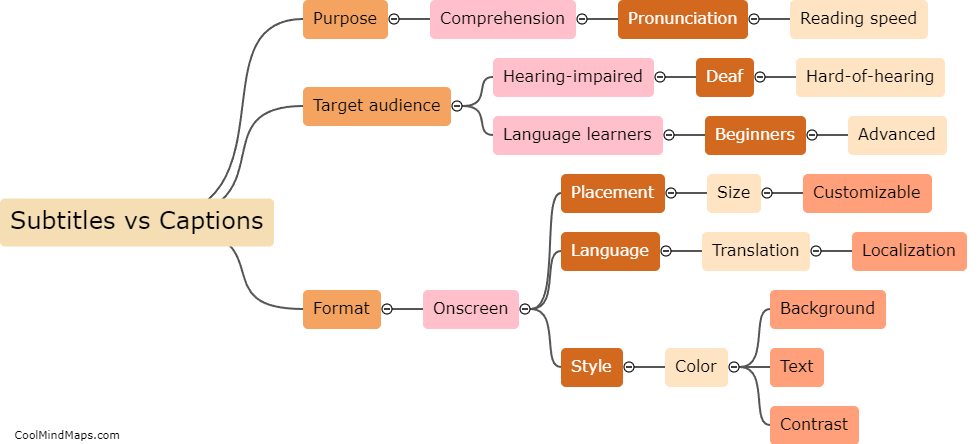
This mind map was published on 17 May 2023 and has been viewed 158 times.

